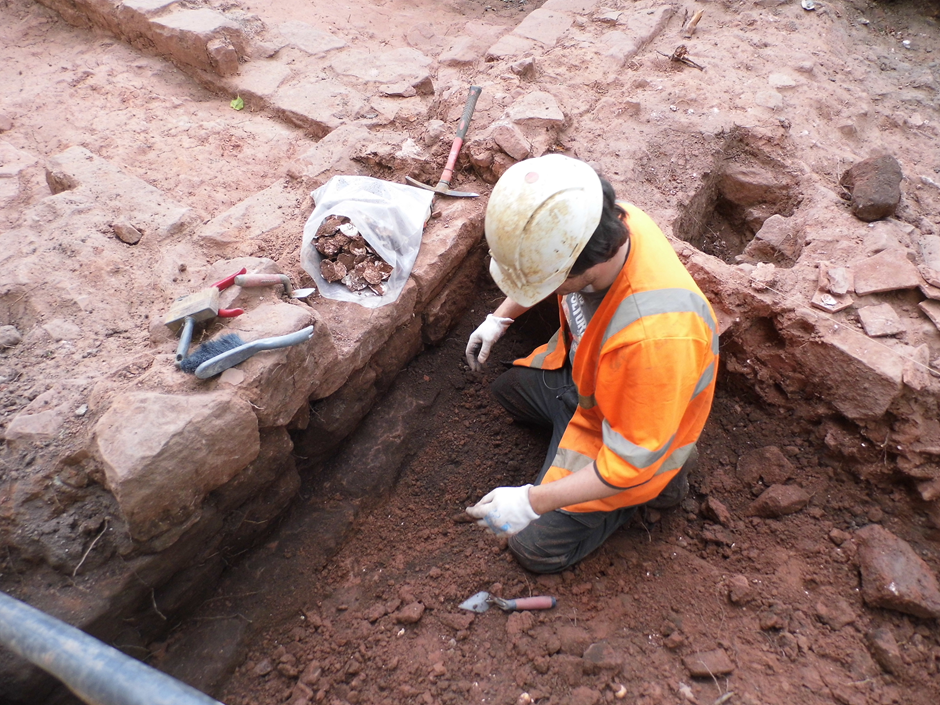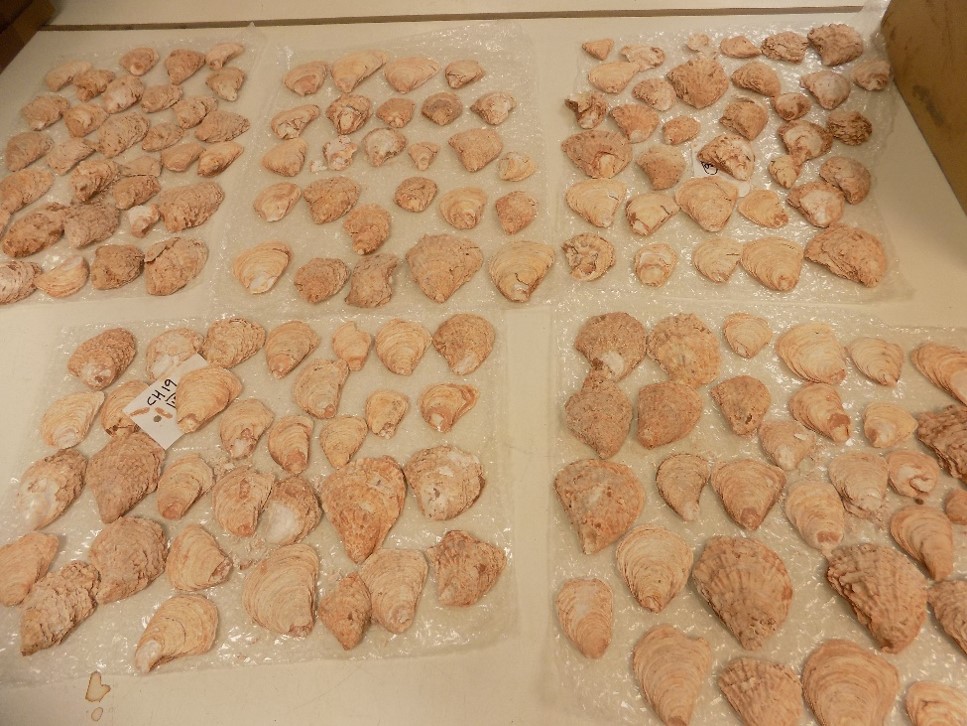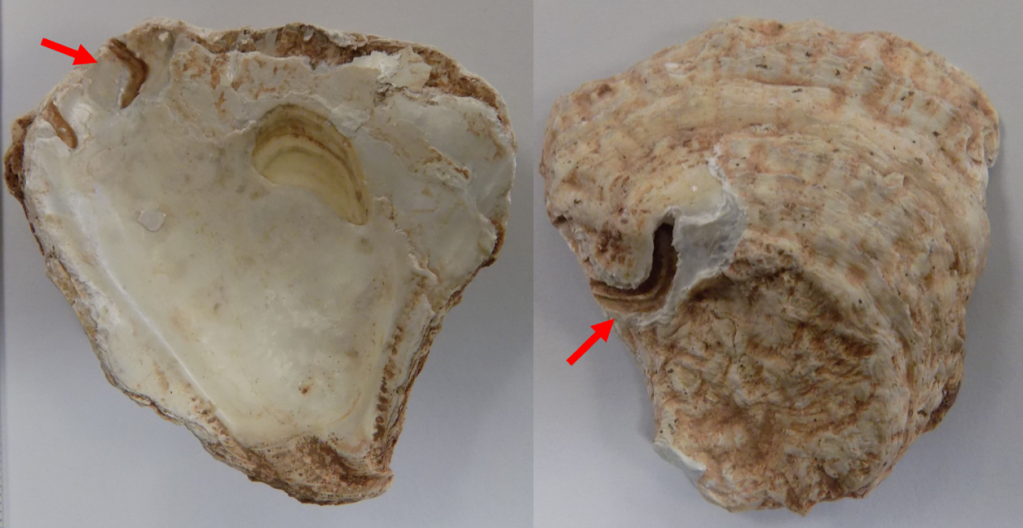In our second blog from Coventry Charterhouse, site director Andrew McLeish and environmental archaeologist William Johnson introduce us to an often-overlooked aspect of archaeological projects but one which can contribute greatly to them…
In our last blog we talked about the discoveries made during the excavation of the area forming the extension to the new café space at Coventry Charterhouse, and we left on a gentle cliff-hanger about the discovery of a disturbed midden of oyster shells. In this post we are going to take a little time off site and take a closer look at how environmental archaeology can add greatly to the understanding of a site.

Not every archaeological excavation is identical, sometimes you will have just the outlines of the features but lots of pottery, sometimes no pottery but lots of animal bone, other times neither. In Charterhouse’s case we have a lot of exceptionally well-preserved building remains but little in the way of personal artefacts.
This is, for this site, actually not unexpected – monks of the Carthusian order had little in the way of personal possessions and what they had would have been taken away with them at the time of Henry VIIIs dissolution of the monasteries in the mid 1500’s. It often surprises visitors to our excavations when they ask “what have you found?” and the answer is “not very much actually.” However – this is where the environmental side of things comes into play.
We know much about the Carthusian way of life, the order is still very much active across the world with twenty (as of 2020) active Charterhouses across four continents as well as the archaeological evidence from defunct European Charterhouses (religious orders have always been a multinational affair). The rules for their diet are well established but environmental archaeology can tell us much about what they were eating and where it came from, which can throw up some surprises about the mobility of people, and trade and travel in the medieval period.
Over to Will, one of ULAS’s finds and environmental specialists to explain more about how we go about this.
Excavations at the café site at Coventry Charterhouse in 2020 unearthed a large deposit of marine shells mixed with demolition material from an area just outside the rear garden wall behind the monk’s cells on the western range. This was mainly composed of oyster shells which we believe may have been consumed by the occupants of the monastery. In total, fragments of 578 shells made up of both the left and right halves were recovered, the majority of which were relatively intact. These were brought back to the ULAS labs to undergo further analysis to learn more about the diet and provisioning of the monastery and the medieval oyster trade.

Information about the growing environment of oysters is preserved in characteristics of their shells. The shape, growth rate, maximum size and other shell features are all influenced by the water and sediment conditions. The presence of other marine organisms that have interacted with the shells can also be detected. This includes parasites that invade the shells, the marks of predators as well as organisms that use the shells as a surface to set up their own homes. All of these things can be combined together to form a dataset for a group of shells which acts as a signature for the group, much like a fingerprint. This signature can then be compared to the data from other shell groups, both ancient and modern, to determine whether they were obtained from similar sources.
In addition to telling us about the natural environment, certain features can help us interpret oyster fishing and management practices that were being carried out in the past. For example, the majority of oyster shells recovered from Roman sites show a high proportion of irregularly shaped shells, indicating they were growing in crowded environments with limited space. By contrast, shells from medieval and later sites tend to be more regularly shaped. This shows a change over time from the exploitation of natural oyster beds in the Roman period to the introduction of bed management in the medieval period. The exact nature of these management practices can be explored using other characteristics.
The Coventry Charterhouse shells showed a relatively small size, typical of the medieval period. Changing climate conditions, overfishing in earlier periods and a change in management practices led to the growth of smaller shells than those usual in Roman Britain. Evidence of several other marine organisms was observed on the shells. These included the burrows made by marine worms, boreholes made by predatory whelks and scars caused by the attachment of barnacles. Of particular note were long burrows in the surface of the shells made by the worm Polydora hoplura. This worm has a known historical distribution limited to the waters of the south coast, indicating that the shells had been traded over a long distance to reach Coventry.

The small sizes, low levels of other organisms and solidity of the shells all indicate they derived from deeper water beds that would have been lower in nutrients and relatively stable levels of salinity and water pressure. This would have necessitated the use of dredging with nets to retrieve the shells, which is also evidenced by the narrow range of shell sizes present.
Several of the shells showed damage at the margins from where they had been prised open. This indicates the oysters were still alive when they had arrived in Coventry, with the two valves still firmly clamped together. The oysters could have been eaten raw or the meat extracted for use in recipes. Often raw oysters were served presented in the cupped left-hand shell and the greater numbers of this shell within the deposit could indicate this was the primary mode of consumption for these particular oysters.
Learn more about Roman and medieval oysters with this talk ‘From Tide to Table’ by Will:
In our next blog post we’ll move over to the eastern range of cells and take a look at how we re-examined an archaeological excavation from forty years ago and the new things we’ve subsequently learned…